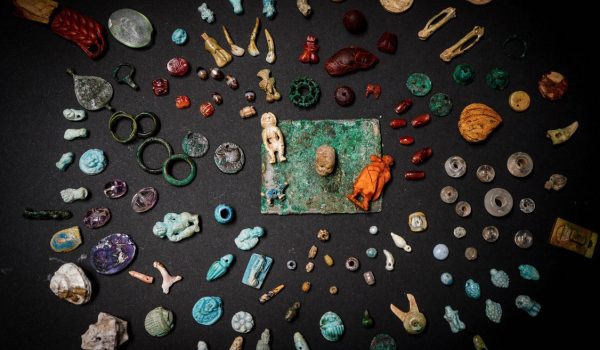The wood of the box has decomposed and only the bronze hinges remain, well preserved under the volcanic material.
Among the numerous objects found, two mirrors, pieces of necklace, decorative elements made of faïence, bronze, bone and amber, a glass unguentary, phallic amulets, a human figure and various gems (including an amethyst with a female figure and a carnelian with a craftsman figure). In a glass paste is engraved the head of Dionysus, on another a dancing satyr.
The high quality of the amber and glass pastes and the engraving of the figures confirm the importance of the domus owner.
Soon the jewels will be exhibited, with other Pompeian jewels, at the Palestra Grande, in an exhibition that will be a follow-up of “Vanity”, the exhibition dedicated to jewels from the Cyclades and Pompeii, as well as from other sites in Campania.
"They are objects of everyday life in the female world and are extraordinary because they tell micro-stories, biographies of the inhabitants of the city who tried to escape the eruption" - says General Director Massimo Osanna - "In the same house, we discovered a room with ten victims, including women and children, and now we are trying to establish kinship relationships, thanks to DNA analysis. Perhaps the precious box belonged to one of these victims. Interesting is the iconography of objects and amulets, which invoke fortune, fertility and protection against bad luck. And the numerous pendants in the shape of small phallus, or the ear, the closed fist, the skull, the figure of Harpocrates, the scarabs. Symbols and iconographies that are now being studied to understand their meaning and function"


